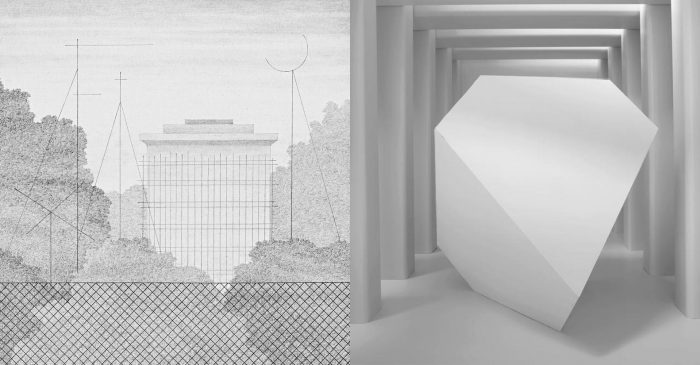The photo series Architectonics specially taken for the exhibition are like Maasik’s tribute to Vint’s architecturally organised pictorial worlds, but also reflect his understanding of the ideal space and ideal architecture as an architect. These are meticulous compositions where nothing is redundant and nothing is missing, where architecture has reached the ultimate level of abstraction and generalisation. Maasik, who had previously photographed scrubby thickets and houses, has this time constructed the photographed objects himself: the precise mock-ups with their clear and definite sense of line are three-dimensional models of something he calls “white architecture”: “I am interested in the emergence of a metaphysical origin in white architecture, white surfaces and the emptiness between them. Openings in walls, light and shade. My goal is to create a geometric space”. Maasik’s models have a familial resemblance to the “architectons” which, according to a tradition dating back to the Russian avant-garde art of the 1920s, signify abstract sculptures created by architects that strived toward pure geometric art. What Maasik’s earlier work and the new series have in common is a searching for order and seeing it in both artificial and natural environments, the desire to show the rhythm between volumes, but also the physical constructive forces, and to present it all in a rational way characteristic to him, without too much sentiment.
Mare Vint strives also for order and the perfect balance in the image space. Her motifs are always extremely aesthetic: nature, parks and houses appear in Vint’s work as perfected archetypes – as ideal forms. We have all seen these landscapes, walls and white southern cities somewhere; we recognise them by their simplicity, and yet we remain outside because they are pronouncedly inaccessible, like images from a dream. “I have become more minimalist over time. I believe that the sparer the picture, the stronger its influence may be. And of course, parks have always been my favourite theme. This is my ideal: perfection between nature and the creation of man.” Vint’s aesthetics have been associated with the reaction of the artists of her generation to the ugliness and the harrowing reality of the Soviet era. They sought motifs from minimalist Japanese beauty through references and emptiness. However, in Vint’s toolkit of architectural motifs, we can also recognise a postmodern awareness that was brought to the Estonian art scene by young architects in the 1970s – historical buildings, classicist elements, the beauty of decay and ruins, and the relationship between nature and the urban environment.
Let it be said that neither artist believes in magic in the esoteric sense. Their geometry is not carried by some system of symbols which only a few chosen ones can read. Rather, they are interested in the world seen through a highly aesthetic and abstract prism – through the eyes of an artist who alone is able to bring order in the surrounding spatial chaos and see it through.
Gallery name: Eesti Arhitektuurimuuseum
Address: Ahtri 2, Tallinn
Opening hours: Tue-Sun 11:00 - 18:00
Open: 07.06.2019 - 25.08.2019







